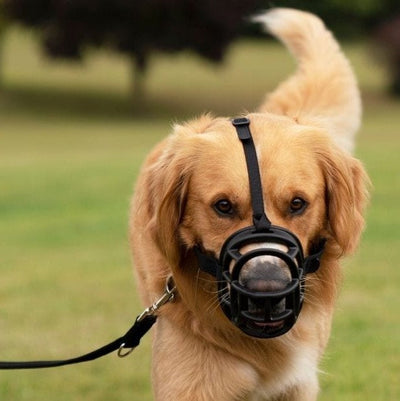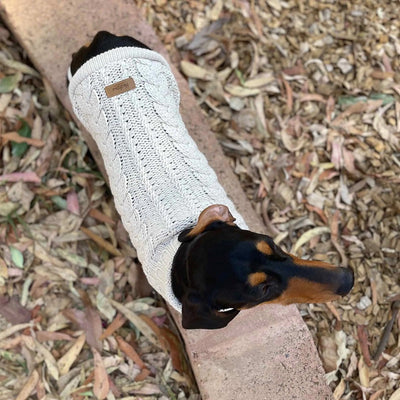
The premise behind ball therapy is straightforward. Dogs or puppies are encouraged to hold a suitably sized ball just behind their canine teeth. The pressure exerted by the ball against the canines acts akin to a retainer, guiding the teeth into a more desirable alignment. It's crucial to select a smooth rubber ball of the right size for the puppy, such as rubber balls. The process can often reduce the need for any corrective orthodontic therapies as the pup grows.
Our furry companions bring boundless joy into our lives, but just like humans, they can face health challenges, including dental issues. Overbites and underbites are common orthodontic problems in dogs, especially in certain breeds. These issues not only affect their dental health but can also impact their overall well-being. However, there's a gentle and effective solution gaining traction in the veterinary world: Dental Ball Therapy.
Let's delve into what this innovative therapy entails and how it can help our beloved canine friends achieve a perfect smile.
Understanding Dental Ball Therapy:
The premise behind ball therapy is straightforward. Dogs are encouraged to hold a suitably sized ball just behind their canine teeth. The pressure exerted by the ball against the canines acts akin to a retainer, guiding the teeth into a more desirable alignment. It's crucial to select a smooth rubber ball of the right size for the puppy, such as rubber balls. It involves the use of specially designed balls that encourage the correct positioning of the jaws and teeth through gentle chewing and play. The process can often reduce the need for any corrective orthodontic therapies as the pup grows.
For puppies with overbites or underbites, the imbalance in jaw alignment can lead to various complications such as difficulty eating, increased risk of dental problems, and even discomfort. Traditional treatment methods may involve surgery or orthodontic devices, but these options can be invasive, costly, and stressful for the animal. Dental Ball Therapy offers a more natural and stress-free alternative.
How Ball Therapy Works for Puppies
The concept behind Dental Ball Therapy is simple yet effective. The specially crafted balls are made from durable materials that are safe for chewing. They are designed to promote proper jaw alignment and encourage the natural movement of teeth while the puppy plays and chews on them.
As the puppy engages with the ball, the repetitive chewing motion helps exercise the jaw muscles and encourages them to adapt to the correct position gradually. Over time, this can lead to noticeable improvements in the alignment of the jaws and teeth, alleviating the issues associated with overbites or underbites.
Benefits of Dental Ball Therapy for Puppies
- Non-Invasive: Unlike surgical interventions or orthodontic devices, Dental Ball Therapy does not involve any invasive procedures or discomfort for the puppy. It's a gentle and natural approach to correcting orthodontic issues.
- Stress-Free: Puppies typically love to play and chew on toys, making Dental Ball Therapy an enjoyable experience for them. It reduces stress and anxiety associated with other treatment methods.
- Cost-Effective: Compared to surgical procedures or ongoing orthodontic treatments, Dental Ball Therapy is a more affordable option for pet owners.
- Promotes Dental Health: Regular chewing on the dental ball helps maintain good oral hygiene by reducing plaque and tartar buildup, thus preventing dental problems in the long run.
- Customisable: Dental balls come in various sizes and textures, allowing pet owners to choose the most suitable option for their puppy's breed and size
How to do ball therapy with your puppy
Here's a step-by-step guide on how to perform ball therapy with your puppy:
-
Choose the Right Ball:
- Select a smooth rubber ball that is appropriate in size for your puppy.
- Good options include rubber balls, such as the durable Bionic Super Ball or select one from out Chuckit range.
- Continue to monitor the correct size ball for your puppy's breed and age. As your puppy grow, it is important to check if they need a larger size ball.
-
Introduce the Ball:
- Begin by introducing the ball to your puppy in a positive and playful manner.
- Allow your puppy to sniff and explore the ball to familiarise themselves with it.
-
Encourage Holding:
- Gently place the ball just behind your puppy's canine teeth, positioning it centrally in the mouth.
- Encourage your puppy to hold the ball in their mouth by using treats or toys to create positive associations.
- Initially, your puppy may only hold the ball for short periods. Gradually increase the duration as they become more comfortable.
-
Supervise and Monitor:
- Supervise your puppy while they engage in ball therapy to ensure their safety and proper usage of the ball.
- Monitor their behaviour and response to the therapy. If your puppy shows signs of discomfort or resistance, take a break and try again later.
-
Consistency is Key:
- Incorporate ball therapy into your puppy's daily routine to maximize its effectiveness.
- Aim for short sessions several times a day, gradually increasing the duration as your puppy becomes accustomed to the therapy.
-
Reward and Reinforce:
- Praise and reward your puppy for participating in ball therapy.
- Use verbal praise, treats, or favorite toys to reinforce positive behavior and encourage them to continue with the therapy.
-
Regular Check-ups:
- Schedule regular check-ups with your veterinarian to monitor your puppy's progress and ensure that the therapy is having the desired effect. It may not be the solution for your pups individual condition.
- Your veterinarian can provide guidance and adjustments to the therapy plan as needed.
-
Be Patient and Persistent:
- Orthodontic corrections take time, so be patient and persistent with ball therapy.
- Celebrate small victories and milestones along the way, knowing that each session brings your puppy closer to a healthier and happier smile.
By following these steps and incorporating ball therapy into your puppy's routine with care and patience, you can help them achieve optimal dental health and alignment while strengthening your bond through positive reinforcement and play.
Ball Therapy offers a promising solution for puppies with overbites or underbites, allowing them to achieve proper jaw alignment and a perfect smile without the need for invasive procedures. By harnessing the natural chewing instinct of dogs, this non-invasive therapy promotes dental health and can avoid further orthodontic procedures requiring a general anaesthetic.
As responsible pet owners, it's essential to explore gentle and effective treatment options like Dental Ball Therapy to ensure our puppies lead happy and healthy lives.
© weknowpets 2024






